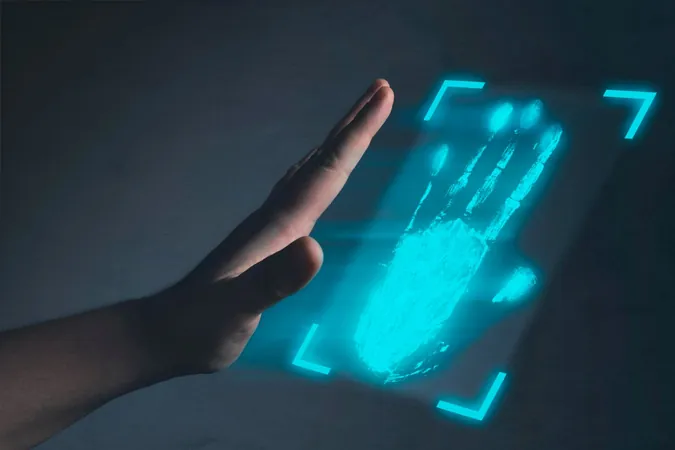
Samsung's Groundbreaking Palm Print Scan: The Future of Smartphone Security?
2025-05-26
Author: Noah
In a world where smartphone security is paramount, many users rely on biometrics to keep their devices secure. While traditional methods like PINs and passwords have their downsides, the introduction of fingerprint and facial recognition seemed to be a revolutionary step forward. However, these methods might not be as safe as you think—enter Samsung's latest innovation: palm print scanning.
A Game-Changer in Biometric Security
Samsung has recently patented a cutting-edge palm print recognition system that promises enhanced security for its Galaxy smartphones. Unlike fingerprints that can be bypassed with clever tricks, palm print recognition dives deeper, analyzing vein patterns beneath the skin. This makes imitation far more complex, thus ensuring a higher level of protection.
The Future is Here: How It Works
According to reports, Samsung's new system will utilize the camera module of the smartphone in conjunction with specialized processors. By capturing at least three detailed coordinates from a palm image, along with angles of rotation, the device will create a unique palm print profile for each user. This technology is set to revolutionize how we think about unlocking our devices.
The Security Race: Is Biometric Authentication Enough?
Despite the advancements in biometric technology, threats still exist. Techniques such as 'DeepMasterPrints' demonstrate that determined hackers could potentially crack fingerprint systems. Yet, current methods like 'BrutePrint', which emerged recently, haven’t resulted in real-world breaches—at least not yet. This underlines the ongoing quest for a more secure biometric alternative.
What’s Next for Samsung and Palm Recognition?
As Samsung paves the way in palm print security, the tech giant is focused on a future where your phone doesn’t just recognize your face or fingerprint but your entire palm. This innovation could set a new standard in personal security. Samsung has yet to provide specific details about when we can expect this technology in future Galaxy models, but the anticipation is certainly building.









 Brasil (PT)
Brasil (PT)
 Canada (EN)
Canada (EN)
 Chile (ES)
Chile (ES)
 Česko (CS)
Česko (CS)
 대한민국 (KO)
대한민국 (KO)
 España (ES)
España (ES)
 France (FR)
France (FR)
 Hong Kong (EN)
Hong Kong (EN)
 Italia (IT)
Italia (IT)
 日本 (JA)
日本 (JA)
 Magyarország (HU)
Magyarország (HU)
 Norge (NO)
Norge (NO)
 Polska (PL)
Polska (PL)
 Schweiz (DE)
Schweiz (DE)
 Singapore (EN)
Singapore (EN)
 Sverige (SV)
Sverige (SV)
 Suomi (FI)
Suomi (FI)
 Türkiye (TR)
Türkiye (TR)
 الإمارات العربية المتحدة (AR)
الإمارات العربية المتحدة (AR)